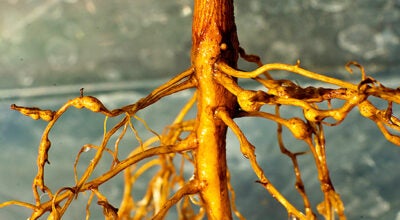MOORE COLUMN: What’s going on in the woods?
Published 11:56 pm Saturday, November 7, 2015
Fall is here and winter is not far behind which means the wildlife in Texas is in a state of flux.
In the Pineywoods and Hill Country the rutting period is heating up. As hunters hit the woods this weekend for the general season, they will experience the best shot at scoring on a big buck all season.
In the South Texas Brush Country, bucks wont be on the trail of willing does until December. The senderos cutting through the thick thorn and cactus will start to come alive with activity as deer crisscross them in their annual display of mating after Thanksgiving.
For free-ranging exotic deer in Texas, like the large axis herd in the southeastern corner of the Edwards Plateau, some does will others heavily pregnant. The peak of rut for axis is summer although these exotic deer can potentially breed throughout the year.
Texas’ large Rio Grande turkey population is enjoying kernels of corn from the tens of thousands of feeders scattered throughout their range. More turkeys are killed in Texas during deer season than during the spring breeding periods so the birds are feeling the pressure.
The creek and river bottoms are their hideaways as they roost in small to large concentrations to maximize their security. With incredible vision and hearing they are able to locate predators from extremely long distances.
Here in East Texas, the remnant eastern turkey population is enjoying a peaceful time. No hunting is allowed during fall so the birds respond to hunting pressure in the woods by slipping into remote areas and staying out of sight. Our easterns are extremely elusive.
The marshes, bottomlands and lakes across the state are loaded with ducks and geese.
In the coastal marshes and rice fields gadwall, green-winged teal and pintails feed on abundant forage left behind by agriculture and that remaining in the natural wetlands.
The playa lake country in the Panhandle has concentrations of Canada geese, snows, specklebellies and huge sandhill cranes.
Along the coast rafts of redheads, scaup and canvasbacks sit on the open water of the bays. Boats crisscrossing the bays push them from location to location with scattered pockets of hunters benefitting from the pressure.
The creek and river bottoms of East Texas are home to large numbers of migrant mallards mixed with native wood ducks and scattered hooded mergansers.
Beneath the water’s surface there is plenty of interesting activity as well.
Gigantic bull black drum begin beating their ways into the bays right about now. With a chin full of barbels and a face that is not exactly what most anglers would consider attractive they look as much sea monster as sportfish. From the jetties and surf and in deep channels, these beasts await anglers looking for something that pulls extremely hard.
Most flounder area starting to make their way toward the Gulf of Mexico. With a healthier flounder population than we have had in years, there are a good portion of fish that stay behind throughout winter. They dwell the deep water channels and move onto nearby flats to feed.
On the lakes across the state the biggest bass in the state are starting to bite. The Toyota Sharelunker Program opens Oct. 1 and for good reason. A fair portion of the 13-pound plus fish are caught now. Cool waters and low fishing pressure seem to get monster bass active
We often talk about taking kids our hunting or fishing to spark their interest in the outdoors and that is important but simply allowing them to encounter wild things is equally important.
There are many times I have never taken a shot or even seen a deer, hog or other game animal I was pursuing but I always see something wild, beautiful and untamed.
Right now is a great time to be outdoors.
(To contact Chester Moore, e-mail him at chester@kingdomzoo..com. You can hear him on “Moore Outodors” Fridays from 6-7 p.m. on Newstalk AM 560 KLVI and online at klvi.com.)





